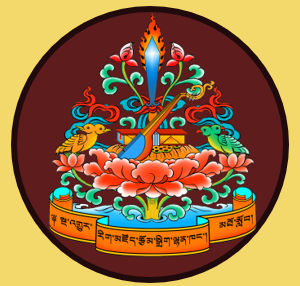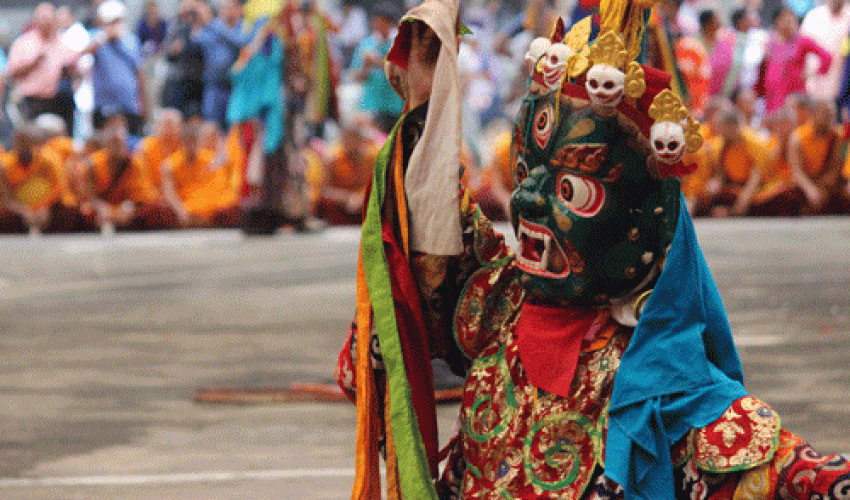Generally, cham (ritual dance) falls under the drama category of the ten distinctive arts of Tibetan Buddhism. In a broader sense, it is an art of dancing according to the sound of cymbals, drums, trumpets or other instruments. However, ritual dances are related to gar-thig-yang sum (dance, drawing mandalas, and ritual melodies). It is defined as a spiritual art of dancing while wearing masks and costumes, and holding symbolic weapons like those of the wisdom deities that have appeared to great masters. It is the display for an audience of the body, speech and mind of wisdom deities in the form of dance.
It is generally accepted that the foremost religion that prevailed in Tibet prior to the introduction of Buddhism was the Bon tradition. At the time of Tibet’s first king, Nyathri Tsenpo (r. 127 BCE–?), there is valid evidence of the existence of ritual dances related to the Bon tradition.

The first ritual dances within Buddhism in Tibet are said to have been performed in the eighth century during the consecration ceremony of Samye Monastery. Gradually ritual dances were adopted by great masters of the Nyingma, Gelug, Kagyu and Sakya lineages by creating the choreography according to the teachings of Lord Buddha. These are what are called “vajra dance” in the tantra teachings. However, some ritual dances are said to be choreographed according to the pure visions of great masters.
At the time of Lochen Rinchen Zangpo, he spread ritual dances that he discovered when translating tantra texts from Sanskrit to Tibetan.
Sherab Nangwa, a Sakya master, also wrote on ritual dance based on the directions of Lama Sonam Gyaltsen. Later, Wangdrak Jungne, a Kagyu master, and the Fifth Dalai Lama also created ritual dances.
Within the Nyingma tradition, there are two major ritual dances: those of kama and terma.
Gar-cham and tsa-cham of kama are performed to bless the land and to protect the land from evil spirits. In order to subjugate demons, thro-cham is performed. These are the ritual dances performed according to the Guhyagarbha Tantra and others. They were passed down from King Dza to his followers who later taught them to Ngag Jnanakumara. From him the lineage masters are as follows: Nubchen Sangye Yeshe, Yonten Gyatso, Zurchung Sherab Drakpa, Len Chuburwa, Gyalwa Gya, and Gomphugpa, up to Lochen Chopal Zangpo.
Lochen Dharma Shri also invented ritual dances related to the texts on ritual dances by Rongzom Mahapandita, which still prevail at present.
Ritual dances of terma include the visionary ritual dances of the terton Guru Chowang: takar-cham (“white horse ritual dance”) and zhanag-cham (“black hat ritual dance”). Takar-cham was mainly practised by the followers of the Minling tradition. It was spread in Dokham by Chokyi Jungne and was later adopted by the followers of the Palyul tradition.
Zhanag-cham was mainly adopted by Mikyod Dorje. Later it was practised by Dorjedrak and Kathok Monasteries.
Terton Pema Lingpa also created unique dances called Peling Gingsum 1 that are practised in Bhutan.
Religious ritual dances are the practices of Mantrayana and are laden with blessing such that the mere sight of them can result in the realisation of the ultimate nature all phenomena. So, they are considered to be swift paths to attaining liberation.
By Rigzod Editors
NREC, 2018



